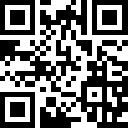2012年自考英语(一)复习指导:动词句型(3)
主语+及物动词+宾语(带逻辑主语的动名词短语)
I don''t know him/his lending my money.转自环 球 网 校edu24ol.com
My mother forbids me/my smoking in the house.
I miss you/your bringing me cups of coffee at night.
The old lady hated the children/children''s playing in her garden.
The little girl loves her mother/her mother''s reading to her in bed.
注意:
1.动名词短语的逻辑主语可以是人称代词、名词、名词短语(如him, its, Tom, the students)或是比较正式的所有格形式(如his, Tom''s, the students'')。不表示人的代词或名词所有格则很少使用。如
I looked forward to its getting warm in spring.
We stopped the truck''s craching into the wall.
2.用于这一句型的动词主要有 admire, dislike, forbid, hate, imagine,justify, like, love, miss, prevent, recall, regret, remember, report, resent, stand, stop, undestand和urge。
3.用于这一句型的动词一般不用于被动结构。
主语+及物动词+宾语+宾语补语(形容词/形容词短语)
I''ll plead you guilty.
You will make yourself sick.
They all found the joke funny.
The medicine made the old man''s eyes weak.转自环 球 网 校edu24ol.com
This will not only keep the study habit alive but also keep you up to date on your class assignments.
注意:
用于这一句型的部分动词可以用于被动结构,但主动结构要更为自然。如:
The old man''s eyes were made weak (by the medicine).
主语+及物动词+宾语+宾语补语(名词/名词短语)
I consider Linda my best friend.
Our teacher declared him the winner.
The boss made Mr. Brown chairman of the department.
注意:
用于这一句型的动词可用于被动结构。如:
He was declared the winner (by the teacher).
主语+宾语+宾语补语(介词/介词短语)
He placed the violin in a corner.
He put some small berries in his mouth.
Bob pointed a forefinger at each word in turn.
A nurse took the tired, anxious serviceman to the bedside.
He felt sweat oh his forehead, but he took the violin from the wall calmly.
注意:
1.这一句型里的宾语补语多为表示空间,特别是表示方向的介词短语。
2.用于这一句型中的动词一般可用于被动结构。如:
The violin was placed in a corner (by him).
主语+及物动词+宾语+宾语补语(不带to的不定式短语)
The jokes made my side ache.
Louise would not let anyone follow her.
One day they saw him put a lot of bread under his shirt.
Now and then the nurse heard him say a few gentle words.
We watched the tall figure cross the square and get onto a bus.
注意:
1.用于这一句型的动词多是感知动词(如feel, hear, see和watch)或是具有强制意义的动词(如have, help, let和make)。
2.动词help后的不定式标志to可有可无,help sb. to do sth.多见于英式英语,help sb. do sth. 多见于美式英语。
3.除watch外,其它动词均可用于被动语态,主动结构中的宾语则变为被动结构中的主语,而不带to的不定式则变为带to的不定式,但主动结构要更为自然。如:
He was seen to put a lot of bread under his shirt one day.
主语+及物动词+宾语+宾语补语(现在分词)
The newspaper article set me thinking.
Louise could hear someone singing far away.
The Jewish man watched me trying to read that paper.
The men from the ship saw a strange object lying on the beach.
They found the young man wading through some marshes in a military exercise.
注意:
1.用于这一句型的动词一类是感知动词(catch, discover, feel, find, hear, leave, notice, observe, overhear, perceive, see, smell, spot, spy和watch),另一类是使役动词(get, have, keep, set和start)。
2.除动词have和start外,其它动词一般可用于被动结构,即将主动结构中的宾语变为被动结构中的主语,但主动结构要更为自然。如:
Iwas watched (by the Jewish man) trying to read that paper.
3.动词feel, hear, notice, see, observe, overhear和watch后既可接现在分词作补语,又可接不带to的不定式作补语,这二者的区别是:前者表示正在进行的动作,而后者则着重表示从头到尾的全过程。如:
She watched her son cross the road.
她看着儿子过了马路。(注视着全过程)
She watched her son crossing the road.
她看着儿子过马路。(不一定是全过程)
最新资讯
- 考前必背!自学考试《中国近现代史纲要》论述题高频考点2024-10-19
- 自考报考策略:科学搭配科目,加速毕业进程2024-07-20
- 2025年考研考生五一假期,英语科目应该如何复习?2024-05-03
- 备考指南!2024年4月自学考试考前要做哪些准备?2024-03-31
- 考前备考冲刺!自考如何一次就过?2024-03-30
- 考点汇总:《中国近现代史纲要》论述题2024-03-25
- 备考资料:《中国近现代史纲要》简答题考点汇总2024-03-25
- 自考可以从哪些维度进行备考?2024-02-17
- @自考生,这里有备考技巧2024-02-17
- 自学考试备考复习方法!建议收藏2024-02-16
 打卡人数
打卡人数


